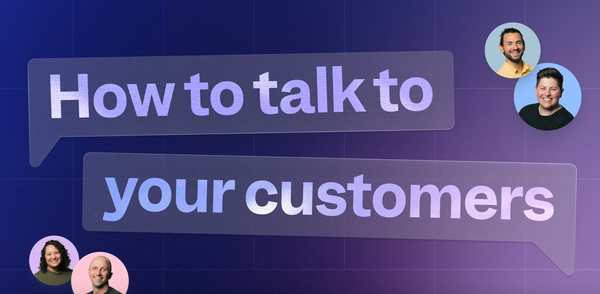The Importance of a Great Customer Experience

Introduction
In the fast-paced world of sales, maintaining strong customer relationships is paramount. However, when a customer receives an email introducing yet another new Account Executive (AE), their immediate reaction often leans towards frustration rather than excitement. The common approach of simply introducing oneself as the new AE often falls flat, leaving the customer feeling like they need to start from scratch. This is not the ideal way to kick off a relationship. Instead, a more thoughtful and prepared approach can set the stage for a successful partnership. This blog delves into why the standard introduction fails and how a well-prepared and empathetic approach can transform the customer experience.
The Pitfall of the Standard Introduction
Imagine receiving an email that says, "This is Mike, I’m the new AE aligned to your account. I see you’re the main admin. Have some time to connect next week?" The customer’s immediate thought is likely, "This is our third AE in the last two years. Now we need to re-explain how we’re using the product, again." This reaction is understandable. Frequent changes in account managers can be frustrating for customers, who must repeatedly explain their needs, usage, and expectations. This repetitive process not only wastes their time but also erodes their trust in your company’s stability and commitment.
Why the Standard Introduction Fails
- Lack of Personalization: The generic nature of the introduction does not convey any understanding of the customer's specific needs or history. It feels impersonal and transactional.
- Customer Fatigue: Frequent changes in AEs can lead to customer fatigue. They tire of repeating their story and re-establishing rapport with new representatives.
- Missed Opportunity to Build Trust: The first interaction is crucial for building trust. A standard introduction misses the chance to demonstrate that you have done your homework and are genuinely interested in the customer’s success.
A great customer experience starts with the first interaction. It sets the tone for the entire relationship. By taking the time to understand the customer’s history, challenges, and successes, you show that you value their time and are committed to helping them achieve their goals. This proactive approach not only builds trust but also positions you as a knowledgeable and reliable partner.
Steps to Creating a Great First Impression
1. Do Your Homework
Before reaching out to the customer, gather as much information as possible. This preparation involves multiple steps:
- Speak with the Previous AE and Team Members: Have a detailed conversation with the previous AE, Customer Success Manager (CSM), Sales Engineer (SE), Professional Services (PS), and renewals team. Understand the customer’s journey, pain points, and successes.
- Engage with Partners and SIs: If the customer has relationships with System Integrators (SI) or partners, reach out to them for additional insights.
- Understand Their Use Cases: Know the specific use cases the customer is leveraging your product for. This knowledge will help you speak their language.
- Identify Problems Addressed: Understand the problems they have solved using your product and the results they have achieved.
- Analyze Support Tickets: Review customer support tickets, both good and bad, to gauge their satisfaction and recurring issues.
- Evaluate Their Expertise: Assess their level of expertise with your product to tailor your support accordingly.
- Monitor Usage and Adoption Metrics: Understand how they are using the product and the level of adoption within their organization.
- Track Feature Requests: Be aware of any feature requests they have made, as this shows you are attentive to their needs.
- Identify Whitespace: Look for areas where your product could add more value, highlighting opportunities for growth.
2. Crafting the Right Message
Once you’ve gathered all the necessary information, craft a message that reflects your understanding and appreciation of the customer’s journey. An effective introductory email might look something like this:
Subject: Excited to Partner with You
"Hi Mary and team,
I’ve heard wonderful things from Ashley and am excited to work with you this year. I’ve had a full debrief with our internal teams and am up to speed on how you’re using the platform today. Appreciate your ongoing partnership. How about a virtual lunch next week for a meet and greet? I’ll shoot over a few Amazon gift cards. Below are a few open slots. Let me know what works and we can get it on the books. Thanks!"
This email demonstrates that you have taken the time to understand their situation and are eager to build a positive relationship.
Building Trust and Credibility
1. Be Prepared
Being well-prepared for your first meeting with the customer is crucial. This preparation involves:
- Reviewing All Available Information: Ensure you have all the details from your research at your fingertips.
- Preparing a Customized Agenda: Tailor the meeting agenda to address their specific needs and interests.
- Anticipating Questions: Be ready to answer questions about their past experiences, current usage, and future goals.
2. Show Empathy and Understanding
Empathy is key to building a strong relationship. Show that you understand their challenges and are committed to helping them succeed. This can be achieved through:
- Active Listening: Listen to their concerns and feedback without interrupting.
- Acknowledging Their Efforts: Recognize the work they have done and the successes they have achieved.
- Offering Solutions: Provide actionable solutions to their challenges and show how your product can add more value.
3. Follow Up Regularly
Maintaining regular communication is essential for building trust. This includes:
- Regular Check-Ins: Schedule regular check-ins to discuss their progress and any new challenges.
- Providing Updates: Keep them informed about new features, updates, and changes that might affect them.
- Being Available: Make yourself available to address their concerns and answer their questions promptly.
Creating a Culture of Customer Centricity
To truly excel in customer relationships, your entire organization must embrace a customer-centric culture. This involves:
1. Aligning Goals Across Teams
Ensure that all teams, from sales to support, are aligned in their goals and priorities. This alignment can be achieved through:
- Shared Metrics: Establish shared metrics that reflect customer satisfaction and success.
- Collaborative Tools: Use collaborative tools to ensure seamless communication and information sharing between teams.
- Unified Messaging: Maintain a consistent and unified message when communicating with customers.
2. Empowering Employees
Empower your employees to make decisions that benefit the customer. This can be done by:
- Providing Training: Offer training programs to enhance their customer service skills.
- Encouraging Initiative: Encourage employees to take initiative and go the extra mile for customers.
- Rewarding Success: Recognize and reward employees who demonstrate exceptional customer service.
3. Listening to Customer Feedback
Customer feedback is invaluable for improving your products and services. Make it a priority to:
- Collect Feedback: Use surveys, interviews, and other tools to collect feedback regularly.
- Analyze Feedback: Analyze the feedback to identify trends and areas for improvement.
- Implement Changes: Act on the feedback to make meaningful changes that enhance the customer experience.
Conclusion
In conclusion, a standard, impersonal introduction from a new AE can set a negative tone for the customer relationship. By taking the time to do your homework, crafting a personalized and empathetic message, and consistently building trust and credibility, you can create a positive and lasting impression. Embracing a customer-centric culture within your organization further strengthens these relationships, ensuring that every interaction adds value and fosters loyalty. Remember, a great customer experience starts with the first interaction. Make it count.


